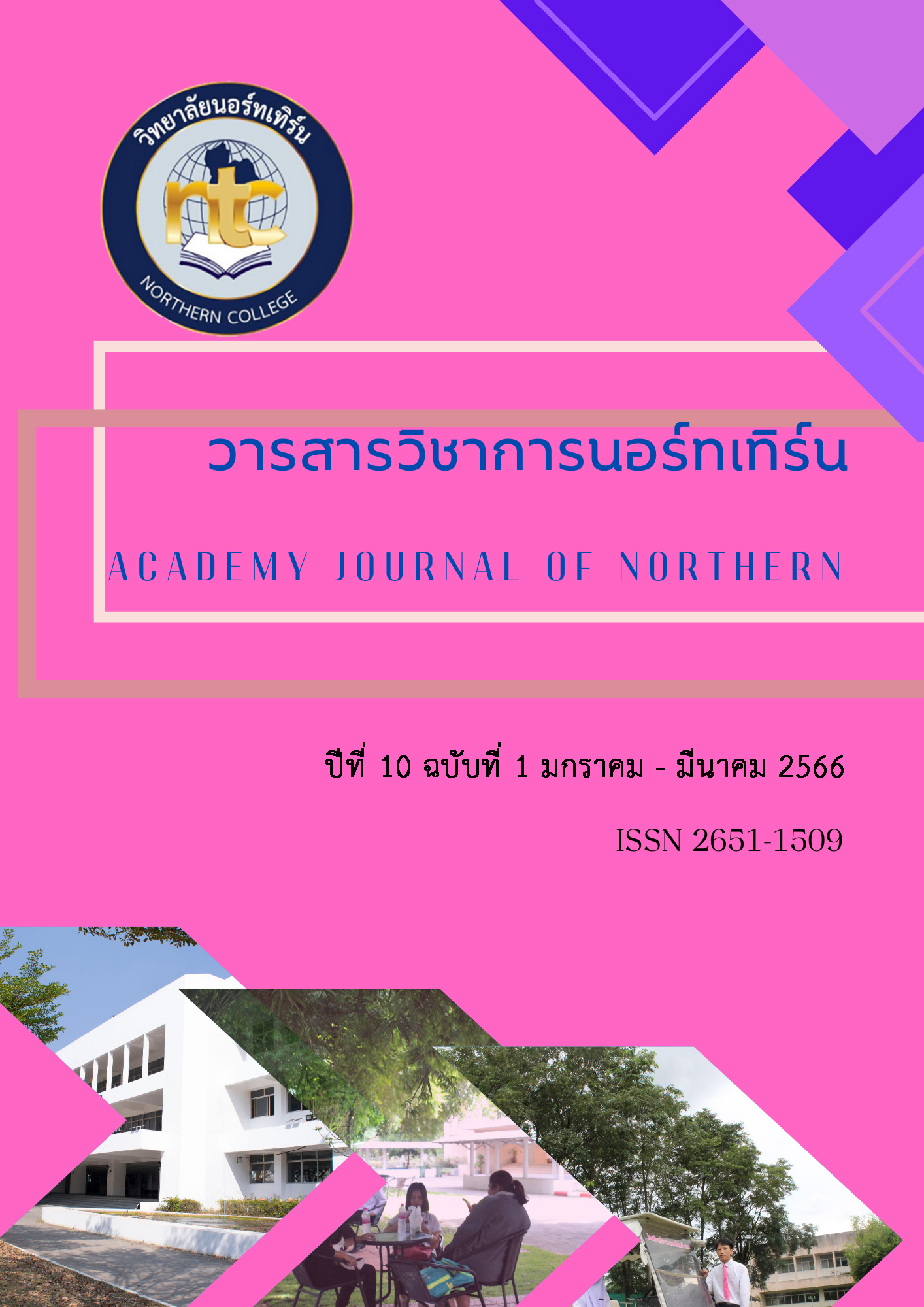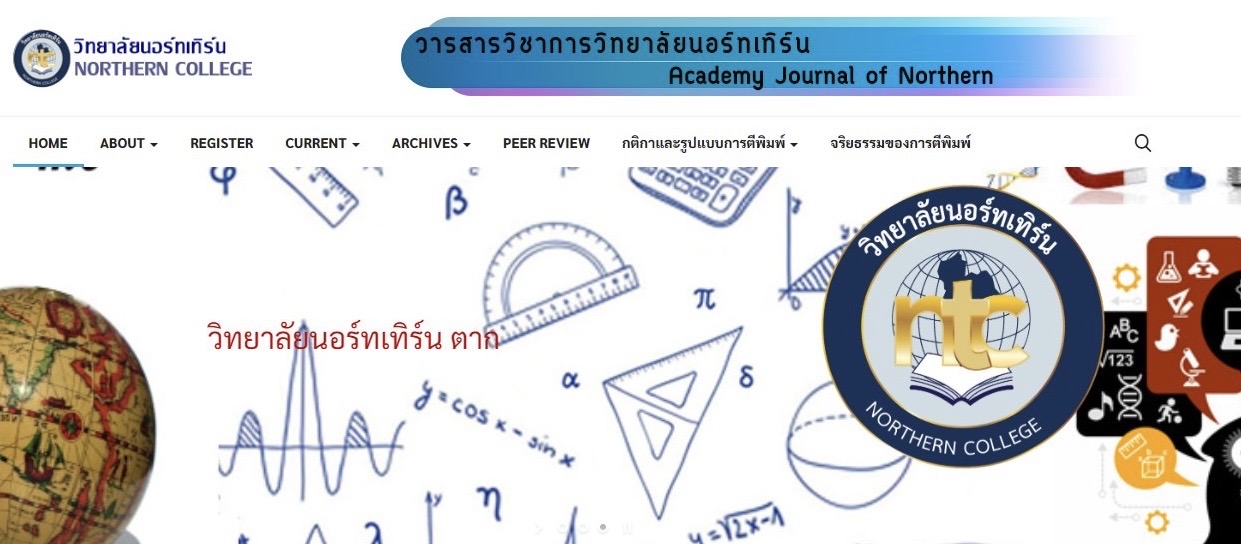Interaction and Identity Creation of Thai - Chinese Descent in Phuket
Keywords:
Ethnicity, Interaction, Thai - Chinese DescentAbstract
Thai-Chinese relations in Phuket date back to the 14th century, with t he vast majority of overseas Chinese arriving from Fujian Province. They t raveled through the Malay Peninsula to trade and work in the mines. The i nfluence of the Hokkien Chinese immigrants who caused their own culture from the Malay Peninsula to spread. The resulting cultural process has cre ated a unique regional identity of the Phuket city community that is differe nt from the original source population.
This academic paper aims to study interaction and identity creation o f Thai - Chinese descent in Phuket and how it affects the creation and main tenance of ethnic identity of Thai-Chinese demographic. It can be conclude d that cultural interactions are of mutually reinforcing characteristics: ada ptation, borrowing, assimilation, and integration, forming an expressive d ualism. Defining an identity of “Baba” or “Thai - Chinese Descent in Phuke t” reflects one's identity through language, traditions, rituals, in which the existence of ethnic identity is linked through knowledge, beliefs and group process This is the power relationship that has molded Thai Chinese in Ph uket,thus strengthening ethnic consciousness.
References
ขวัญจิต ศศิวงศาโรจน์. (2542). สารานุกรมกลุ่มชาติพันธุ์ ฮกเกี้ยน. กรุงเทพ ฯ : สถาบันวิจัยภาษาและวัฒนธรรมเพื่อพัฒนาชนบท มหาวิทยาลัยมหิดล.
จี. วิลเลียม สกินเนอร์; G. William Skinner แปลโดย พรรณี ฉัตรพลรักษ์...[และคนอื่นๆ], ชาญวิทย์ เกษตรศิริ (บรรณาธิการ). (2529). สังคมจีนในประเทศไทย ประวัติศาสตร์เชิงวิเคราะห์. กรุงเทพฯ : มูลนิธิโครงการตำราสังคมศาสตร์และมนุษยศาสตร์.
ฉลาดชาย รมิตานนท์. (2548). อัตลักษณ์วัฒนธรรม และการเปลี่ยนแปลง. ศูนย์สตรีศึกษาคณะสังคมศาสตร์ มหาวิทยาลัยเชียงใหม่. [ออนไลน์].เข้าถึงได้จาก http://www.soc.cmu.ac.th/-wsc/data/Identity28_3_05.pdf (วันที่ค้นข้อมูล : 10 กุมภาพันธ์ 2565).
ไชยยุทธ ปิ่นประดับ. (2548). ชาวจีนและคนไทยเชื้อสายจีนในภูเก็ต. ภูเก็ต : สำนักงานวัฒนธรรมจังหวัดภูเก็ต.
นฤพนธ์ ด้วงวิเศษ. (2560). อัตลักษณ์ ชาติพันธุ์. ฐานข้อมูลศัพท์มานุษยวิทยา. [ออนไลน์]. เข้าถึงได้จาก http://www.sac.or.th/da tabases/anthropology-concepts/ (วันที่ค้นข้อมูล : 1 มีนาคม 2565).
นิติ ภวัครพันธุ์. (2558). ชวนถก ชาติและชาติพันธุ์. กรุงเทพ : สยามปริทัศน์.
ปรีชา คุวินทร์พันธุ์. (2548). อัตลักษณ์และความหลากหลายทางวัฒนธรรมของเอเชียตะวันออกเฉียงใต้. วารสารกระแสอาคเนย์. 5 (55), 8-37.
ราชบัณฑิตยสถาน. (2556). พจนานุกรมฉบับราชบัณฑิตยสถาน. พ.ศ. 2554. กรุงเทพฯ : นานมีบุ๊คส์พับลิเคชั่นส์.
ลัดดา จิตตคุตตานนท์. (2552). กรณีศึกษา : การวิเคราะห์การสื่อสารเพื่อการดำรงอยู่และสืบทอดงานประเพณีบูชาอินทขิล [ออนไลน์]. เข้าถึงได้จาก: https://phdcommunication. wordpress.com/(วันที่ค้นข้อมูล:15 พฤศจิกายน 2565).
วงศ์เดือน ภานุวัฒนากูล. (2552). อัตลักษณ์ของคนไทยเชื้อสายจีนท่ามกลางความหลากหลายทางวัฒนธรรม. วิทยานิพนธ์ศิลปศาสตร์มหาบัณฑิต, สาขาวิชาพัฒนามนุษย์และสังคม มหาวิทยาลัยสงขลานครินทร์ วิทยาเขตหาดใหญ่.
วันจรัตน์เดชวิลัย และทวนธง ครุฑจ้อน. (2552). แนวโน้มการเลิกใช้ภาษาจีนฮกเกี้ยนในจังหวัดภูเก็ต. รายงานการวิจัย. ภูเก็ต : มหาวิทยาลัยสงขลานครินทร์วิทยาเขตภูเก็ต.
วิโรจน์ ทองอ่อน. (2556). ทัศนคติ ความคิด เกี่ยวกับประเพณีถือศีลกินผักปัจจุบัน. [ออนไลน์]. เข้าถึงได้จาก : http://www.phuketvegetarian.com/how-think/phuketvegetarian-konphuket.htm.(วันที่ค้นข้อมูล : 15 มีนาคม 2565)
สดใส ตันติกัลยาภรณ์. (2552). ใน สมาคมภูเก็ตฮกเกี้ยนสามัคคี พิธีเปิดอาคารใหม่ ฉลองครบรอบ 20 ปี. (หน้า 107 – 112). ภูเก็ต : สมาคมภูเก็ตฮกเกี้ยน.
อมรา พงศาพิชญ์. (2547). ความหลากหลายทางวัฒนธรรม (กระบวนทัศน์และบทบาทในประชาสังคม). พิมพ์ครั้งที่ 4. กรุงเทพฯ : จุฬาลงกรณ์มหาวิทยาลัย.
อภิญญา เฟื่องฟูสกุล. (2546). อัตลักษณ์ (Identity) การทบทวนทฤษฎี และกรอบแนวคิด. กรุงเทพฯ : สำนักงานคณะกรรมการวิจัยแห่งชาติ.
Downloads
Published
How to Cite
Issue
Section
License
Copyright (c) 2023 Academy Journal of Northern

This work is licensed under a Creative Commons Attribution-NonCommercial-NoDerivatives 4.0 International License.







